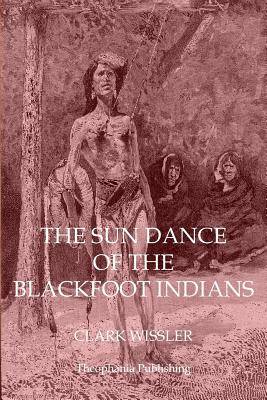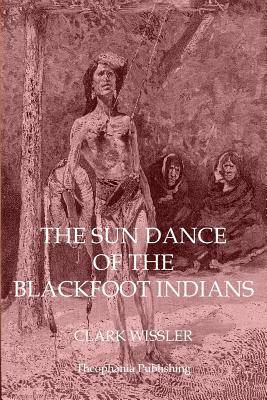
Je cadeautjes zeker op tijd in huis hebben voor de feestdagen? Kom langs in onze winkels en vind het perfecte geschenk!
- Afhalen na 1 uur in een winkel met voorraad
- Gratis thuislevering in België vanaf € 30
- Ruim aanbod met 7 miljoen producten
Je cadeautjes zeker op tijd in huis hebben voor de feestdagen? Kom langs in onze winkels en vind het perfecte geschenk!
- Afhalen na 1 uur in een winkel met voorraad
- Gratis thuislevering in België vanaf € 30
- Ruim aanbod met 7 miljoen producten
Zoeken
€ 27,95
+ 55 punten
Uitvoering
Omschrijving
Thank you for checking out this book by Theophania Publishing. We appreciate your business and look forward to serving you soon. We have thousands of titles available, and we invite you to search for us by name, contact us via our website, or download our most recent catalogues. The Blackfoot tribes, particularly the Piegan, have been more extensively studied than most other Plains Indians. The writer began a systematic investigation of their culture in 1903. At that time, the only works treating them seriously were those of the younger Henry, Maximilian, and Grinnell. There were some good fragmentary articles by McLean and Hale. Yet, since we began work on this problem, a number of excellent books have appeared. First, the long-forgotten journals of Mathew Cocking and Anthony Hendry who went to the Blackfoot country in 1754 were printed. Then followed McClintock's delightful book, "The Old North Trail" and later, Curtis's highly illustrated account of the Piegan. Linguistic studies had been undertaken by Tims, but later, Michelson, Uhlenbeck, and Josselin de Jong brought out studies of the language and some aspects of social organization. Of more popular books, the only one to be considered here is Schultz's, "My Life as an Indian," which, though in the form of fiction, is full of true pictures of Blackfoot life and thought. One unfortunate thing about all this subsequent activity is that it centered on the Piegan and as the writer's work was largely with that division before these publications appeared, there was no chance to rectify this asymmetry. The publication of this study of the sun dance has been long delayed in the hope that circumstances would permit a more intensive study of the ceremony among the Canadian divisions. But the time for making such a study has really passed, since those natives who had the knowledge essential to an accurate exposition of the sun dance are now dead. It seems advisable, therefore, to publish the data as they stand. The writer saw the Piegan ceremony twice, so that this study is based both upon objective observation and discussion with the native authorities on the subject. Later, Mr. Duvall checked over the data and conclusions with these and other informants. A large 4 series of photographs was taken, but the important phases of the ceremony are so well shown in the published works of McClintock and Curtis that a repetition here is unnecessary.
Specificaties
Betrokkenen
- Auteur(s):
- Uitgeverij:
Inhoud
- Aantal bladzijden:
- 74
- Taal:
- Engels
Eigenschappen
- Productcode (EAN):
- 9781770832558
- Verschijningsdatum:
- 9/07/2011
- Uitvoering:
- Paperback
- Formaat:
- Trade paperback (VS)
- Afmetingen:
- 152 mm x 229 mm
- Gewicht:
- 108 g

Alleen bij Standaard Boekhandel
+ 55 punten op je klantenkaart van Standaard Boekhandel
Beoordelingen
We publiceren alleen reviews die voldoen aan de voorwaarden voor reviews. Bekijk onze voorwaarden voor reviews.









